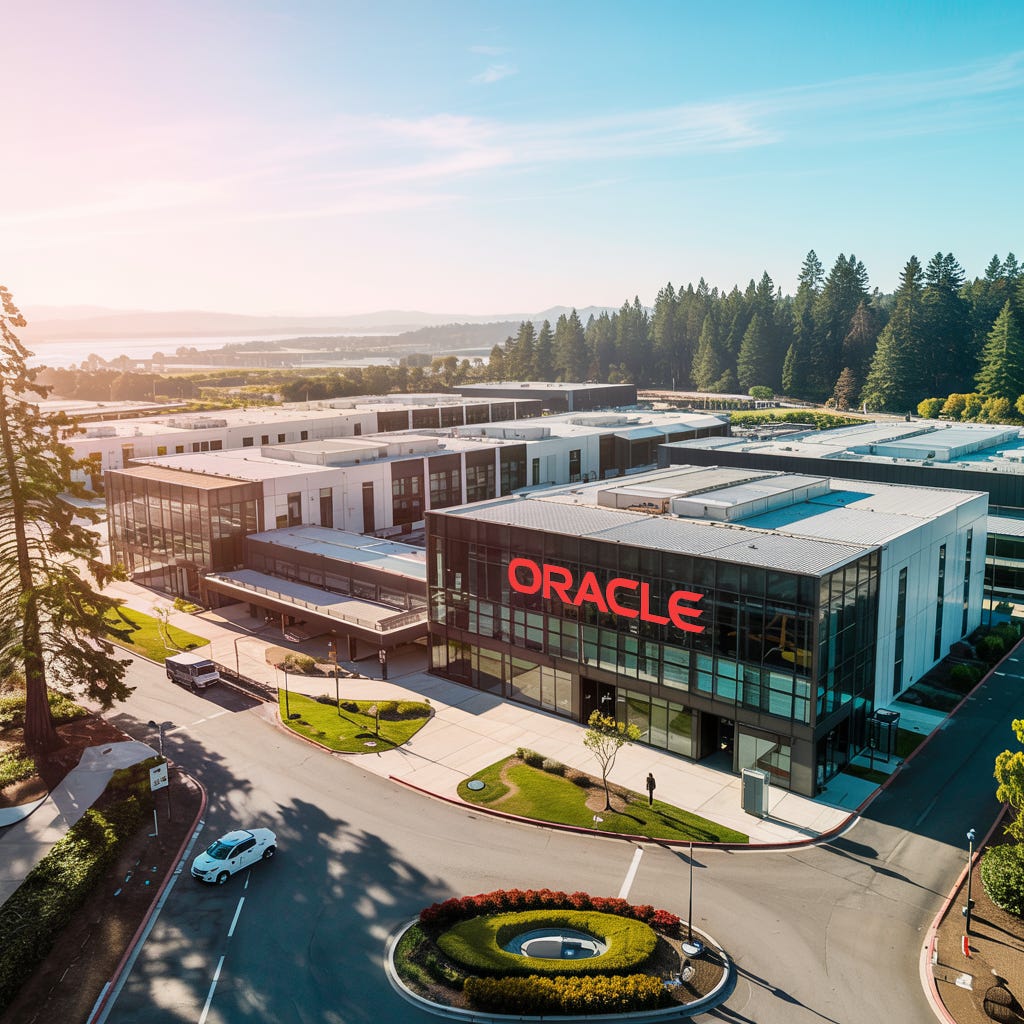Welcome to Global Data Center Hub. Join investors, operators, and innovators reading to stay ahead of the latest trends in the data center sector in developed and emerging markets globally.
Discussion of AI has focused heavily on Nvidia’s chips, Microsoft’s capital spending, and OpenAI’s models. In September, however, the most striking number came from Oracle: a $300 billion backlog in AI-related contracts.
This announcement redefined how investors, operators, and policymakers should think about enterprise adoption. It wasn’t guidance or marketing spin. It was contracted demand stretching almost a decade. Within days, Oracle’s market value climbed more than 30%, reflecting a rapid re-rating by investors who realized the scale of the signal.
The backlog points to something deeper than Oracle’s share price. It shows that AI inference the constant running of models to answer queries and process tasks has matured into a budgeted utility across industries.
What Oracle actually reported
In its September earnings call, Oracle disclosed a record $300 billion in committed AI contracts. Customers have already signed agreements to buy that level of compute capacity in future years.
To put the figure in perspective, the order book could fill Yankee Stadium 5,000 times. It represents locked-in demand, not estimates. Analysts debated whether the number reflected accounting choices or Ellison’s optimism, yet the stock reaction made clear the market accepted it as a real forward demand shock.
Even if execution falters, those workloads still need to be delivered by someone. The demand signal itself cannot be ignored.
Even if execution falters, those workloads still need to be delivered by someone. The demand signal itself cannot be ignored, much like the overlooked shifts highlighted in What Do the Smartest Tech Investors Know About AI That Everyone Else Is Missing?
Why analysts missed it
Oracle has not enjoyed the same spotlight as Nvidia or Microsoft. Its image as a legacy database provider created a blind spot. Analysts focused on margins, deferred revenue, or RPO metrics instead of the sheer magnitude of the order book.
There was also an anchoring issue. Wall Street has been conditioned to track AI demand through GPU shipments or hyperscale capital expenditure. When Oracle revealed a backlog of this scale, the instinct was to question methodology rather than accept that adoption is accelerating faster than expected.
History suggests that when large shifts are underappreciated, they often sit in plain view. Oracle’s announcement may be one of those moments.
Oracle as a demand proxy
Understanding the importance of the backlog requires distinguishing between training and inference. Training is the process of building a model, similar to teaching a student calculus. Inference is the process of applying that knowledge repeatedly at scale, like millions of tests taken every day.
Training garners headlines because it involves expensive GPUs and dramatic buildouts. Inference, however, is where demand compounds. Every customer service query, design prompt, or enterprise workflow that uses AI draws on inference capacity.
Oracle’s $300 billion backlog consists mostly of inference demand. Enterprises are no longer experimenting. They are committing to multi-year contracts to embed AI into operations. Since Oracle does not control the models themselves, the order book functions as a proxy for broad enterprise adoption.
Oracle’s $300B backlog is driven by inference demand. Enterprises are committing to multi-year AI contracts, signaling broad adoption. Oracle’s role as a key infrastructure provider is reinforced by OpenAI’s $30B deal.
Implications for data centers
The contracts extend far beyond Oracle’s cloud revenues. They translate into physical infrastructure requirements: data centers, grid connections, transformers, and cooling systems.
In the United States, the demand adds stress to already strained grids. Northern Virginia’s interconnect queue is years long. Texas is struggling to balance surging loads from both AI and cryptocurrency. The Midwest is gaining momentum because it retains grid headroom. Transformer lead times of 24–36 months mean Oracle’s orders will compound existing delays.
Globally, similar pressures are visible. Singapore has cautiously reopened data center approvals. India is establishing AI-ready economic zones. Japan is investing in grid expansion. Saudi Arabia and the UAE are backing multi-billion-dollar sovereign projects. The European Union is embedding compute targets into its AI Continent Action Plan.
Oracle’s backlog therefore functions as a roadmap for where new capacity must be financed and built over the coming decade. Operators and REITs may never sign directly with Oracle, yet they stand to benefit from the ripple effects.
Risks that remain
Execution risk looms large. Oracle has not traditionally operated hyperscale infrastructure on the level of AWS or Azure. Scaling into that position will require complex procurement of energy and hardware.
Financing poses another challenge. Tens of billions in capital expenditure will need to be raised at a time when borrowing costs remain high.
Competition is also a factor. Enterprises could diversify workloads across multiple providers, diluting Oracle’s share of the contracts.
Finally, macro bottlenecks matter. If power shortages intensify or permitting slows, some of the demand could remain stranded. Contracts only carry value when they are matched with real megawatts and GPUs.
What it means for investors
The key takeaway is that AI adoption has crossed from experimentation into operational budgets. Multi-year, multi-billion-dollar commitments are now embedded across industries.
Oracle’s order book shows that demand is durable, global, and enterprise-driven. Even if Oracle captures only a fraction of the economics, the rest will cascade into the supply chain: chipmakers, cooling providers, power transmission projects, and the REITs financing large campuses.
Investors should track backlog announcements as macro signals rather than narrow company guidance. Oracle’s $300 billion belongs alongside Nvidia’s GPU shipments and Microsoft’s capital expenditure as leading indicators of demand.
The real trillion-dollar question
The figure does not represent hype. It represents a decade of compute demand that is already budgeted. The core issue is no longer whether AI adoption will scale. It is who can deliver the compute and power to match it.
In the AI economy, infrastructure dictates outcomes.

